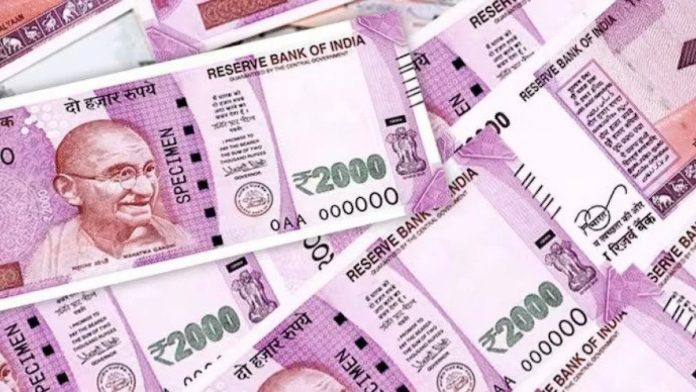The central bank’s decision to remove the highest denomination banknotes in India, worth 2,000 rupees, from the market on Friday is expected to increase the liquidity of the banking system, which will result in a short-term reduction in bulk borrowing rates for the government and corporations.
According to the Reserve Bank of India (RBI), the value of the 2,000 rupee notes in circulation as of March 31, 2023, was $3.62 lakh crore. Treasury officers and analysts anticipate that between 50,000 and 1 lakh crore will enter the system as people queue up to deposit the notes for which the withdrawal process starts on Tuesday, even if the total amount is not yet visible flowing to banks. This can impact the borrowing rate.
Lower rates on short-term money market instruments, including certificates of deposit and treasury bills, are observed as a result of the growth in bank deposits and, consequently, liquidity. Government bond yields with a shorter maturity are also anticipated to fall considerably as banks are required by law to reserve a certain percentage of deposits in national securities. A senior treasury executive of a foreign bank predicted that rates on certificates of deposits would fall by 15 basis points, T-bill yields would drop by 10 basis points, and short-term government bond yields would fall by about 5-7 basis points. 0.01 percent is equal to one basis point.
Also read, ₹ 2,000 Notes To Be Withdrawn by RBI, exchange them by this date.
Why Borrowing Rate to be impacted for Companies:
When bills are restricted from being readily used by citizens, as was the case in the currency exchange experiment of 2016, deposits tend to increase. Deposit deadline is on September 30.
At bank branches, they must be converted into other legal currency denominations. “On the deposit front, experience from demonetisation showed that around 30% to 40% of the value of notes withdrawn went into bank deposits,” said Gaura Sengupta, economist at IDFC First Bank. “Using this as a benchmark, around 1.4 lakh crore, or 0.8% of all bank deposits, might flow into bank deposits. The temporary increase in deposits will help banks’ T-bill investments.
According to Sengupta’s calculations, up to 40% of the value of the current 2,000 note supply may end up in banks. Since enterprises base the pricing of their debt on the yields on government bonds, a decline in the yields on sovereign debt lowers the cost of bond issuance for businesses.
According to bankers, banks already had 2,000 rupee notes worth about 50,000 crore, and it was anticipated that some of those notes will be altered to lesser denominations.
For more news, click here.


